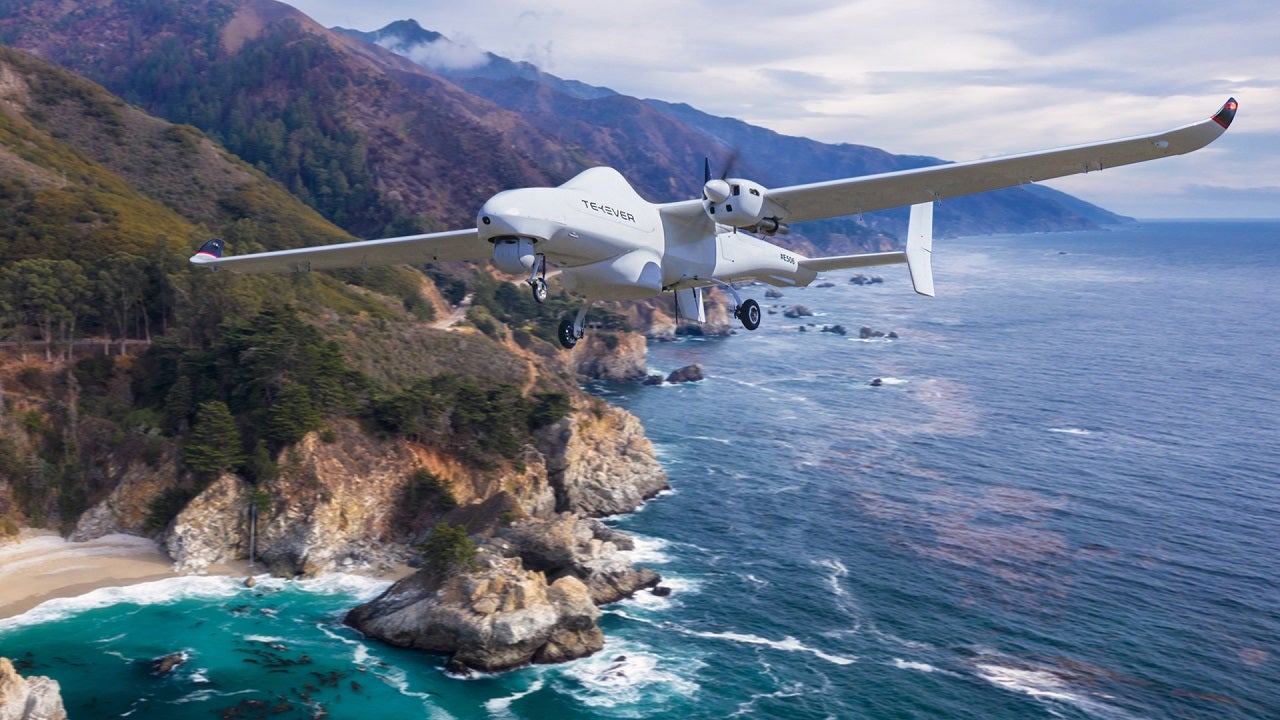
Global aerospace and defence company Tekever successfully launched its AR5, medium-altitude, medium-endurance fixed-wing UAS over Portugal’s west coast earlier this month. It used satellite communications services developed by connectivity provider SES’s wholly owned subsidiary SES Techcom in the framework of the European Space Agency’s (ESA) PACIS-1. The programme was created to develop Pooling and Sharing systems.
Pooling and Sharing is a European Union (EU) concept that refers to member states-led initiatives and projects to increase military collaboration capabilities. The concept was announced by the European Defence Agency (EDA) in 2013.
How well do you really know your competitors?
Access the most comprehensive Company Profiles on the market, powered by GlobalData. Save hours of research. Gain competitive edge.

Thank you!
Your download email will arrive shortly
Not ready to buy yet? Download a free sample
We are confident about the unique quality of our Company Profiles. However, we want you to make the most beneficial decision for your business, so we offer a free sample that you can download by submitting the below form
By GlobalDataPooling of capabilities occur when several member states decide to use capabilities – either nationally or multi-nationally procured – on a collective basis. Sharing, on the other hand, refers to the relinquishing of some capabilities by some states with the supposition that other countries will provide access to them when required.

Light-weight UAS
Tekever’s role, as a surveillance specialist, in the latest stage of PACIS-1 was to provide its UAS and surveillance services to be integrated with Satcom terminals.
The company says the combination of its AR5’s size and capabilities delivers exactly what ESA was looking for. Tekever’s CEO Ricardo Mendes tells Global Defence Technology: “Our UAS provides a lot of capability in the simplest and most compact way. There’s no other drone in the market that we know of that is of this size and can deliver this endurance, with this kind of sensors, and with the SATCOM capability.”
Typically, drones that carry SATCOM terminals tend to be above 500kgs, like the MQ-1 Predator. The AR5, however, has a maximum take-off weight of 180kg. It can reach a cruising speed of 100km/h with an endurance of 20 hours.
The UAS comes with a minimum sensor package that includes an automatic identification system receiver (AIS) and a multi-sensor three axis gyro stabilised gimbal. On request, Tekever provides additional sensors that include maritime radar, synthetic aperture radar and emergency position indicating radio beacons receiver.
The AR5’s typical communication package includes both line of sight and beyond line of sight systems. The communication terminals were provided by micronized satellite terminal provider Get SAT.
Mendes says the project was not about selling AR5s to ESA, but rather the technical integration and demonstration that such service could be fully operational. “It was not to provide real operational service, but to provide an operational demonstration of the service in real in real life, which we did,” he adds.

Connection and collaboration for PACIS-1
Tekever tightly cooperated with the project leader SES and Get SAT. The latter worked with Tekever on integrating one of their terminals on board the AR5. Mendes explains: “To integrate the terminal we had to make changes to the aircraft structure, especially to the canopy to take the most potential out of the terminal.”
Get SAT offers compact, all-in-one multi-band SATCOM solutions that are deployable on platforms across sea, land and airborne operational environments. The units operate on both geostationary equatorial orbit (GEO) and medium earth orbit (MEO) satellite constellations and support seamless data transfer over satellite links. For the demo in Portugal, the Get SAT terminal secured a link within three minutes.
“SES was the project leader, so we interacted with them through all the phases of the project, and they were in charge of the entire end to end service,” Mendes explains.
Tekever’s task was to help SES in optimising the service. For instance, when operating in different areas with the aircraft, the companies’ teams were interacting with each other and worked on improving the communication links by connecting to the appropriate satellites and beams at each step of the process.
Other industrial partners that have joined the consortium included Redu Space Services, GovSat, ST Engineering iDirect (Europe), QinetiQ and provided specific technological contributions, including engineering, satellite capacity, commercial, project management and other services.
Unconventional UAS company
Tekever maritime surveillance capabilities and UAS had attracted other major contracts both within and outside of Europe, including services provided to the UK Home Office.
The company is responsible for the surveillance of the English Channel. Mendes says: “We fly every day, and we provide them [Home Office] with intelligence that they can act on.
“It’s about having the all the chain optimised so from when the image hits the radar or the camera, to the moments where the officer receives the information. And we take care of the entire chain. Tekever manages the airspace, the airfields and provides pilots and its AR5 and AR3 UAS for the operations.
The company, however, with its many computer scientists was set as an AI specialist when it first opened its doors. But Tekever saw the potential in providing a service unlike others.
“We’ve developed all the equipment, all the electronics and the software. We’ve designed the airframes and we’ve produced them. We did the entire chain, but we specifically focused on having a completely different approach to providing an end-to-end service,” Mendes concludes.
Tekever also won a contract with the European Maritime Safety Agency for maritime surveillance by remotely piloted aircraft on 20 October 2021.








